Table of Contents
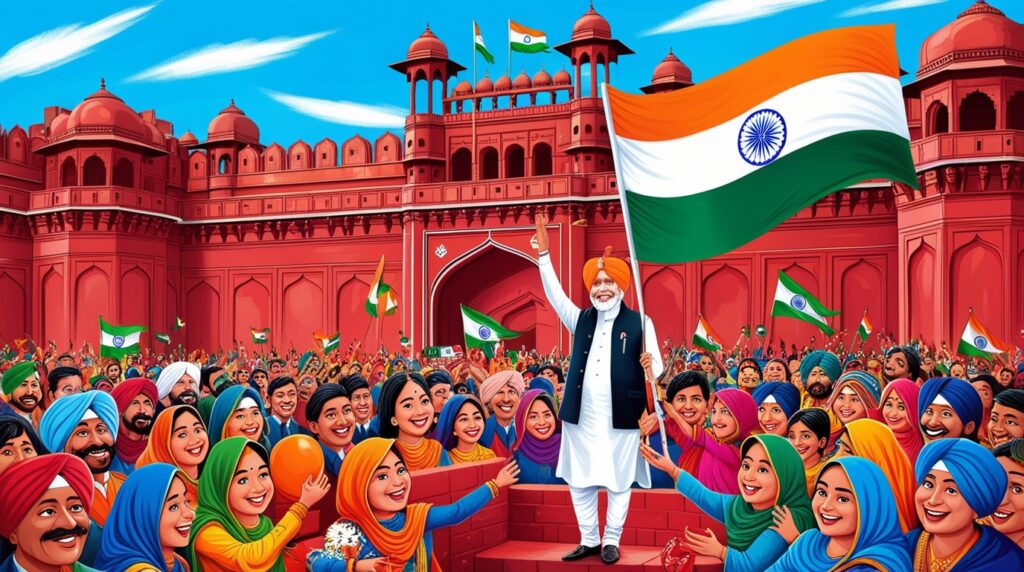
Indian Independence Day
History of India Independence Day: How it All Began
Celebrate India Independence Day(1947) with insights into its history, traditions, and key figures. Discover how the our nation honors this pivotal moment .India Independence Day, celebrated on August 15th each year, marks a pivotal moment in the nation’s history. This day commemorates the end of British colonial rule in 1947, a result of years of relentless struggle and sacrifice by freedom fighters. The Indian independence movement gained momentum through peaceful protests, civil disobedience, and determined leadership, culminating in the historic transfer of power from the British Empire to an independent India.
Significance of August 15th: Why This Day is Chosen
August 15 Indian Independence day was chosen as Independence Day to honor the day when India gained freedom from British rule. This specific date was selected because it aligned with the end of World War II and the Japanese surrender, which significantly weakened British control over its colonies. The choice of this date symbolizes a new beginning for India, a day that signifies the nation’s resilience and commitment to self-governance.
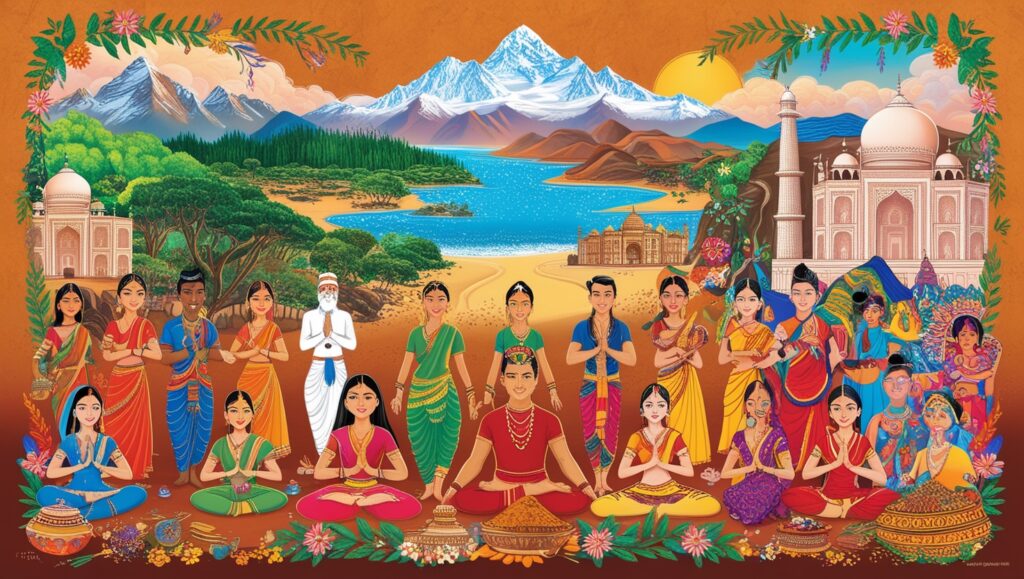
Indian Cultures And Traditions
How India Celebrates Independence Day: Traditions and Customs
Independence Day on 15th August in India is a vibrant celebration filled with traditions and customs that reflect the country’s rich cultural heritage. The day typically begins with the Prime Minister’s speech at the Red Fort in Delhi, where the national flag is hoisted. Schools, government offices, and organizations hold flag-hoisting ceremonies, followed by patriotic songs and dances that evoke a sense of national pride.

Indian Festivals
Festivities and Activities
The India Independence Day celebrations extend to various communities with colorful parades, cultural programs, and patriotic plays. Schools often organize special events where students perform traditional dances, sing national songs, and present skits that highlight India’s journey to independence. Local governments and organizations also host events, ranging from essay competitions to art exhibitions, to engage the public in remembering and honoring their freedom fighters.

India’s Dirversive Culture
Unity in Diversity
One of the most striking aspects of Independence Day is how it brings together people from diverse backgrounds. Celebrations are marked by the display of the tricolor flag and the singing of the national anthem, fostering a sense of unity and national identity. The India Independence day serves as a reminder of India’s shared heritage and the collective effort required to achieve freedom, reinforcing the values of democracy and secularism.
Reflections and Future Aspirations
As India celebrates India Independence Day, it also reflects on its journey and the progress made since 1947. The day is an opportunity for citizens to honor the sacrifices of past leaders and renew their commitment to building a better future. Through various activities and observances, Independence Day inspires hope and fosters a sense of pride in India’s achievements and ongoing journey toward growth and prosperity.
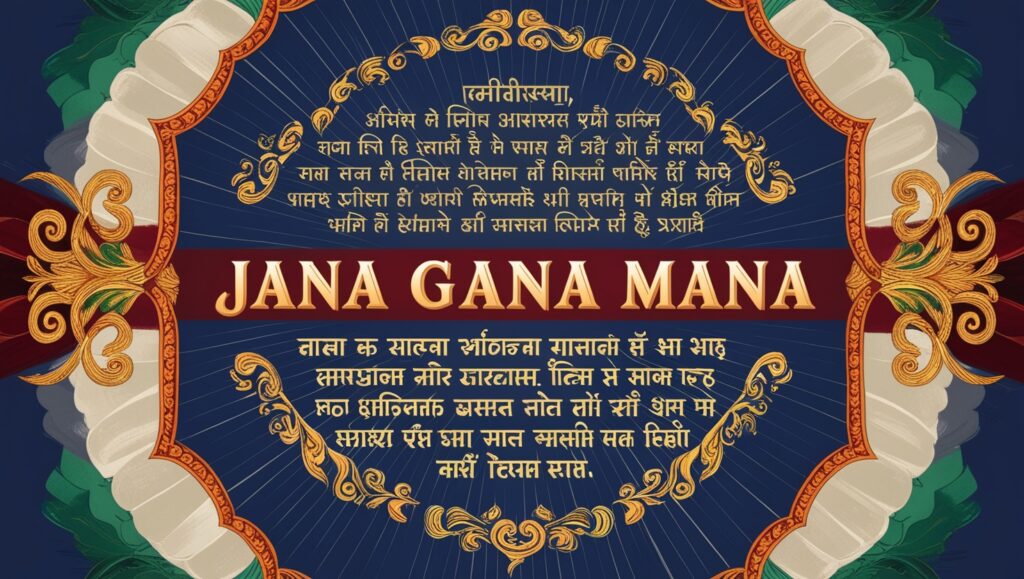
Jan Gan Man
Jan Gan Man: The Story Behind India’s National Anthem
“Jan Gan Man,” India’s national anthem, is a powerful symbol of the nation’s unity and pride. Written by Rabindranath Tagore, this anthem reflects India’s diverse culture and collective spirit. The anthem was adopted officially on January 24, 1950, following India’s independence, and has since become a source of national pride and identity. In the India Independence Day this song is sang by all the people in India.

Rabindranath Tagore: The Visionary Who Composed India’s National Anthem
Rabindranath Tagore, a renowned poet and philosopher, composed “Jan Gan Man.” Tagore, who won the Nobel Prize in Literature in 1913, was deeply influenced by his vision of a unified India. His profound words capture the essence of India’s struggle for freedom and its aspirations for unity, making the anthem a timeless piece of national heritage.
Interesting Facts About the National Anthem You Never Knew
Did you know that “Jan Gan Man” was originally written in Bengali? The anthem’s lyrics were first published in Tagore’s book of poems, “Bande Mataram,” in 1911. Additionally, the anthem is often performed in its full version, which includes five stanzas, though only the first stanza is officially used for ceremonies and public events.
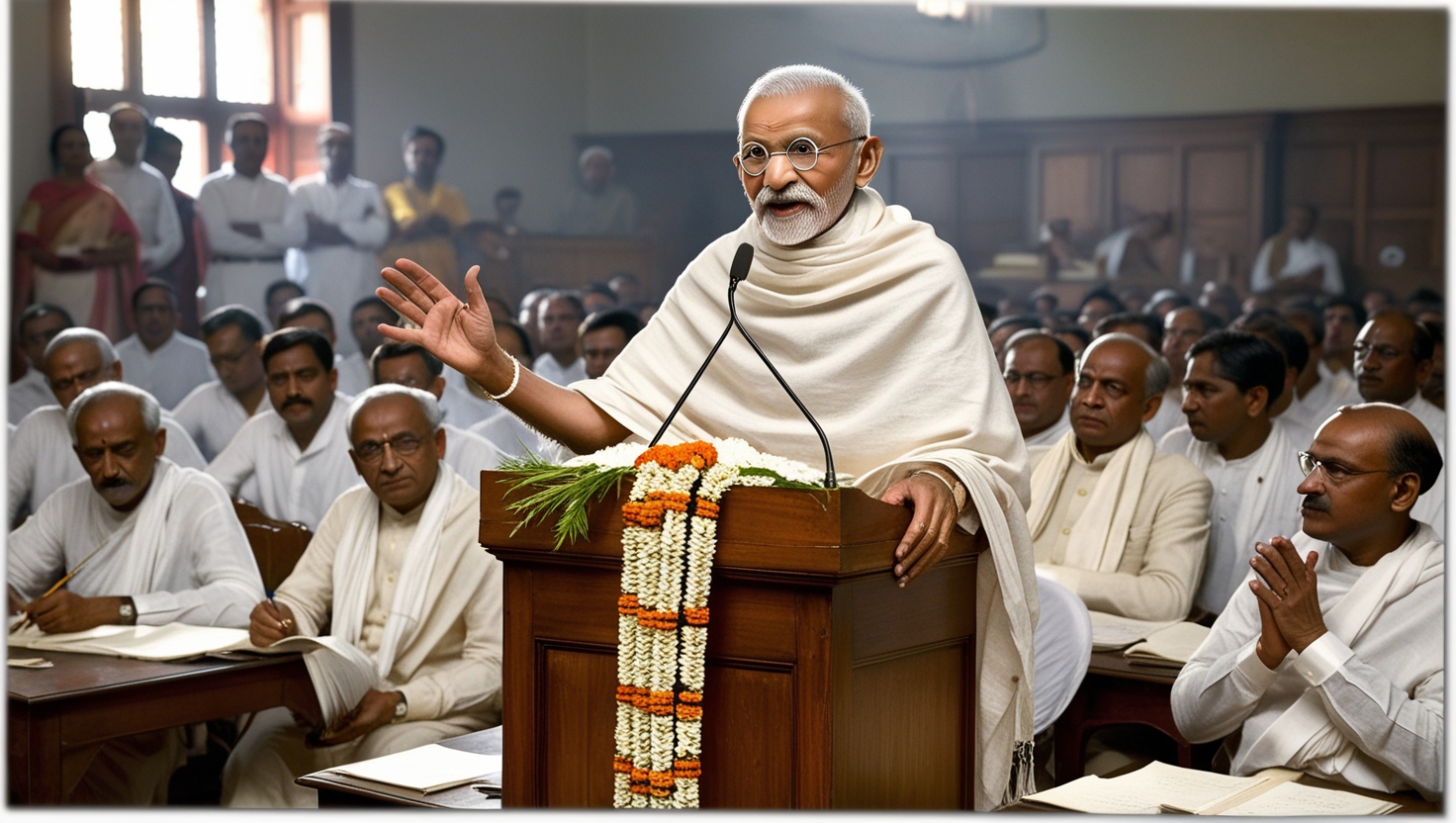
Father of the Nation
Symbolism and Meaning
The anthem’s lyrics celebrate the diversity and unity of India, invoking the country’s vast landscapes and its people’s resilience. The song begins with a call to the “Father of the Nation” and moves through themes of patriotism and collective strength. Each verse of the anthem represents different aspects of India’s identity, reinforcing the country’s spirit of inclusivity and harmony.
Respect and Usage
In India, “Jan Gan Man” is played at various national and cultural events, instilling a sense of pride and unity among citizens. It is customary to stand in attention and show respect when the anthem is played, reflecting the deep reverence for the nation’s symbols. The anthem’s melody and lyrics continue to inspire generations, reminding them of India’s rich history and shared values.
Global Recognition
“Jan Gan Man” is not just a national symbol; it has gained international recognition as well. The anthem has been translated into various languages and performed worldwide, showcasing India’s cultural heritage to a global audience. This global reach highlights the anthem’s universal appeal and its role in promoting India’s values of unity and diversity on the world stage.
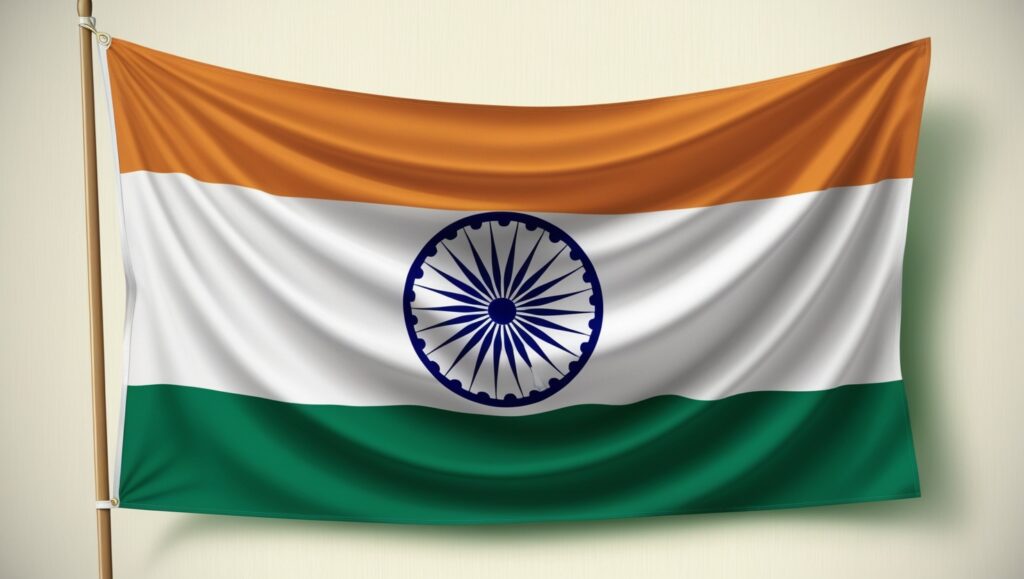
Indian National Flag
The Tricolor: Unfurling the Significance of India’s National Flag
India’s national flag, known as the Tricolor, is a potent symbol of the nation’s pride and identity. Officially adopted on July 22, 1947, just before India independence day, the flag embodies the country’s aspirations and its struggle for freedom. The design and colors of the flag are deeply rooted in India’s history and values, representing the diverse spirit of the nation.
The Colors of Freedom: Understanding the Meaning Behind the Flag’s Colors
The Tricolor consists of three horizontal stripes of saffron, white, and green. Each color holds significant meaning: saffron symbolizes courage and sacrifice, white stands for truth and peace, and green represents faith and chivalry. These colors collectively reflect the values and ideals that form the foundation of India’s democracy and cultural diversity.
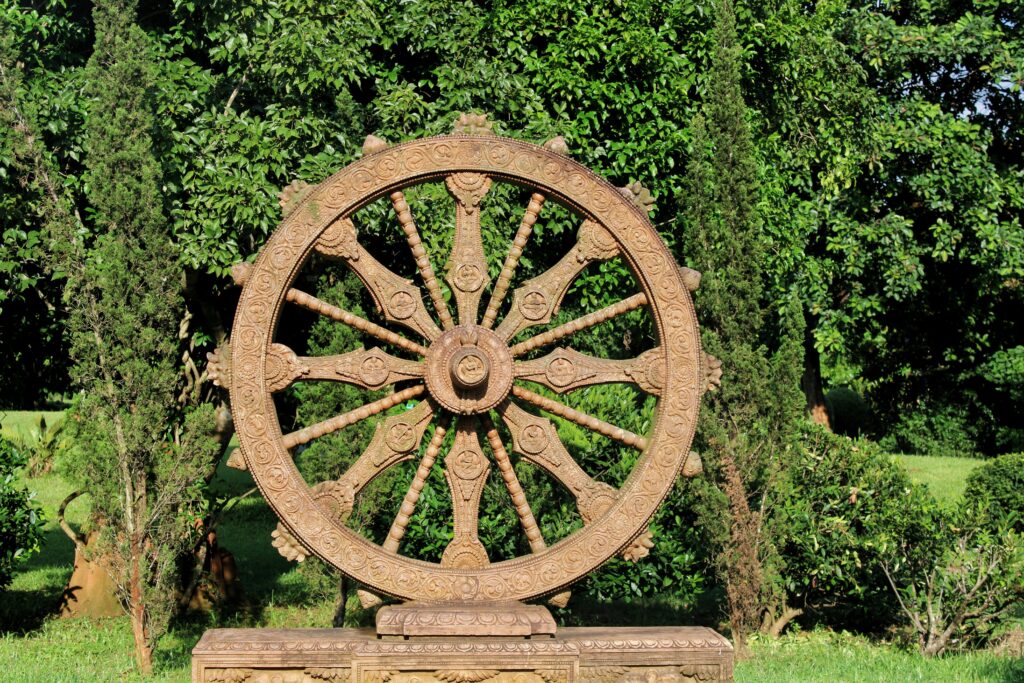
Ashoka Chakra
The Ashoka Chakra: Symbolism and Significance of the 24-Spoked Wheel
At the center of the flag is the Ashoka Chakra, a 24-spoked navy blue wheel. This emblematic wheel is inspired by the Lion Capital of Ashoka, a historical monument from the reign of Emperor Ashoka. The 24 spokes of the Chakra represent the 24 hours of the day, symbolizing the constant progress and dynamic nature of the nation.
Historical Roots and Evolution
The design of India’s national flag has evolved over time. Initially, the flag had a different pattern with a spinning wheel symbolizing the struggle for independence. It was only after considerable debate and refinement that the current design, featuring the Ashoka Chakra, was adopted, representing a modern and progressive India while honoring historical heritage.
Respect and Usage
The national flag is treated with the highest respect in India. It is displayed prominently during national holidays and important events, and there are specific guidelines for its hoisting and handling. Citizens are encouraged to show reverence for the flag, reflecting its role as a symbol of unity and national pride.
Global Symbolism
The Tricolor is not just a national symbol but a representation of India’s values and achievements on the global stage. The flag is recognized worldwide and serves as a beacon of India’s rich history and democratic principles. Its distinctive design and colors make it a powerful emblem of the nation’s identity and aspirations.
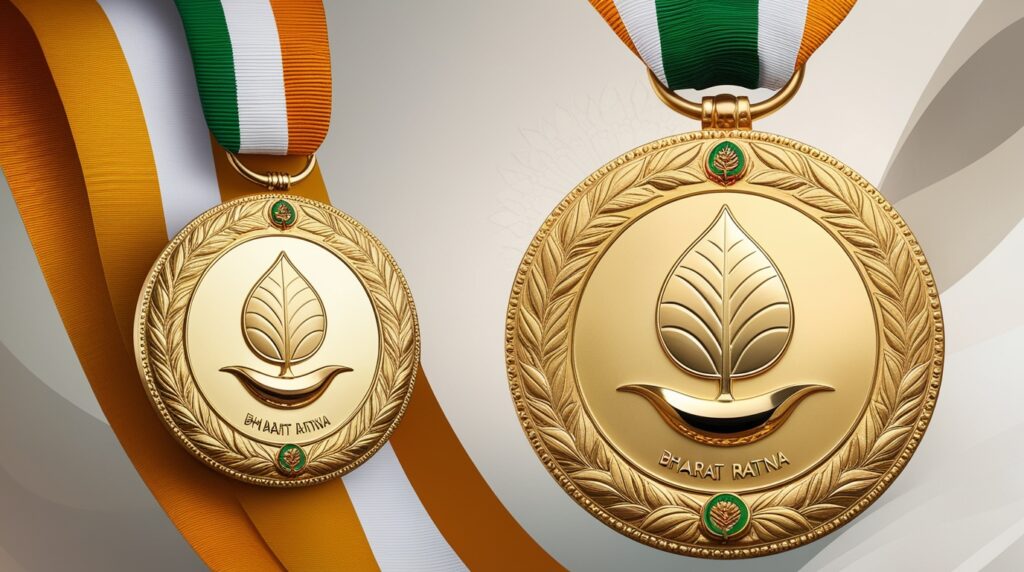
Bharat ratna
National Awards on Independence Day: Who Gets Them and Why
On Independence Day, India honors individuals who have made exceptional contributions to society through national awards. These prestigious awards recognize achievements in various fields such as science, literature, social service, and public administration. The awards highlight the recipients’ dedication and impact, celebrating their role in advancing the nation’s progress and values.
Bharat Ratna: India’s Highest Civilian Honor
The Bharat Ratna is India’s highest civilian honor, awarded for exceptional service in the fields of art, literature, science, and public service. Established in 1954, this award is given to individuals who have made significant contributions to the country and its development. Recipients of the Bharat Ratna are celebrated for their extraordinary achievements and their dedication to enriching Indian society.
Other Prestigious Awards Given on Independence Day
In addition to the Bharat Ratna, several other prestigious awards are presented on Independence Day. The Padma Awards, including Padma Bhushan and Padma Shri, recognize distinguished service in various disciplines. The Jeevan Raksha Padak awards are given for bravery in saving lives, while the National Film Awards celebrate excellence in cinema. These honors reflect the nation’s appreciation for diverse forms of contribution and achievement.
Selection Process and Criteria
The selection process for these awards involves rigorous scrutiny and evaluation by various committees and authorities. Nominations are reviewed based on the candidates’ contributions, impact, and the significance of their work. The awards aim to recognize and encourage excellence across different sectors, reinforcing the values of dedication and service to the nation.
Ceremony and Significance
The award ceremonies on Independence Day are marked by a sense of national pride and celebration. The President of India presides over these ceremonies, highlighting the importance of recognizing and honoring those who have made a difference. The awards not only celebrate individual achievements but also inspire others to contribute positively to society.
Impact and Legacy
Receiving a national award is a significant honor that often has a lasting impact on the recipients and their fields. It enhances their visibility and credibility, allowing them to continue their work with renewed vigor and recognition. The legacy of these awards lies in their role in fostering excellence and inspiring future generations to strive for greatness and serve the nation.
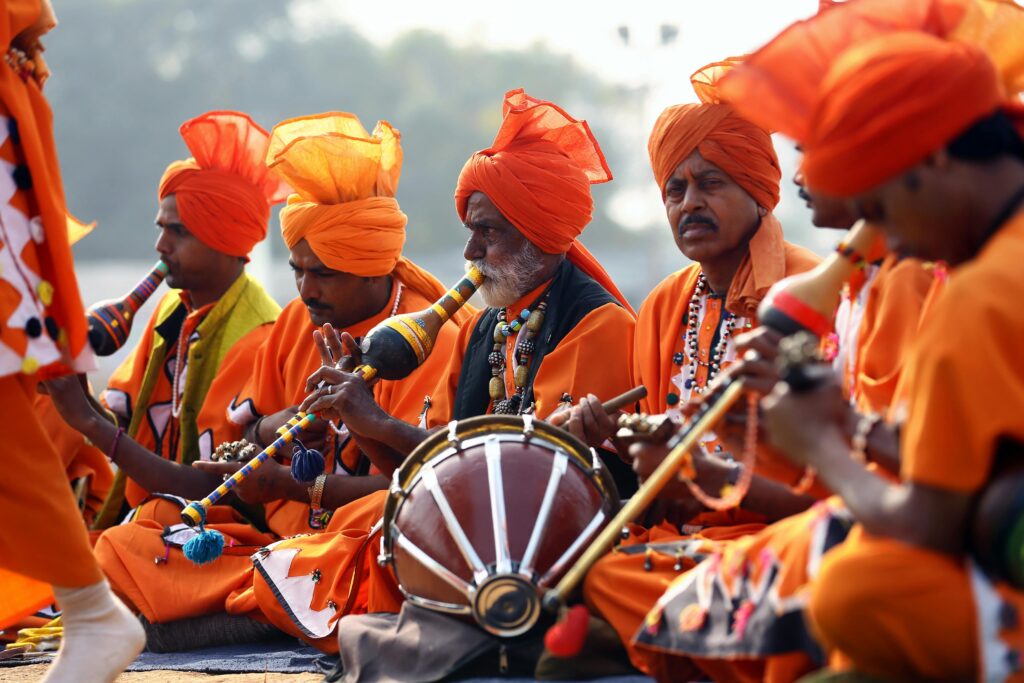
Indian Songs
Top 10 Patriotic Songs to Listen to on Independence Day
Independence Day in India is incomplete without the powerful resonance of patriotic songs. Some top favorites include “Jana Gana Mana,” “Vande Mataram,” and “Maa Tujhe Salaam.” These songs evoke a deep sense of national pride and are perfect for celebrating the spirit of freedom. Other notable mentions are “Ae Mere Watan Ke Logon,” “Chakde India,” and “Kandhon Se Milte Hain Kandhe,” each carrying a unique emotional depth and message of unity.

Lata Mangeshkar: The Nightingale of India’s Patriotic Songs
Lata Mangeshkar, often hailed as the Nightingale of India, has left an indelible mark on patriotic music. Her melodious voice has brought life to numerous patriotic songs, including the iconic “Ae Mere Watan Ke Logon.” Mangeshkar’s emotive singing has inspired countless listeners and perfectly captures the essence of India’s struggle and triumph. Her contributions have made her a cherished figure in Indian music history.
Other Iconic Singers Who Have Sung for India’s Independence
Aside from Lata Mangeshkar, several other iconic singers have made significant contributions to patriotic music. Mohammed Rafi, known for his powerful voice, sang many memorable patriotic songs such as “Chhodo Kal Ki Baatein.” Kishore Kumar’s “Suno Gaur Se Duniya Walon” also stands out for its energetic call to action. More recently, artists like A. R. Rahman and Udit Narayan have continued the tradition with their own heartfelt renditions.
The Impact of Patriotic Music
Patriotic songs play a crucial role in fostering national unity and pride. They remind citizens of the sacrifices made for freedom and the ongoing journey of nation-building. These songs are often played during Independence Day celebrations and national events, reinforcing the sense of collective identity and commitment to the country’s values.
Songs That Transcend Generations
Many of these patriotic songs have transcended generations, remaining popular across decades. Their timeless appeal lies in their ability to connect with people on an emotional level, regardless of age. Whether it’s the soulful notes of Lata Mangeshkar or the stirring calls to action from other legendary singers, these songs continue to resonate with audiences and inspire national pride.
A Celebration Through Music
Independence Day celebrations are incomplete without the vibrant and soulful renditions of these patriotic songs. They serve as a musical tribute to the nation’s freedom struggle and a celebration of its achievements. Listening to these songs not only enhances the festive spirit but also helps in remembering and honoring the values of liberty, unity, and patriotism.

India Independence Day
Flag Hoisting Protocol: Dos and Don’ts for Independence Day
Flag hoisting on Independence Day is a revered tradition, and following the correct protocol is essential. When hoisting the national flag, ensure it is done with the utmost respect and dignity. The flag should be raised briskly and ceremoniously, with the hoisting done at sunrise or early in the morning. Avoid allowing the flag to touch the ground or be used in any manner that could be seen as disrespectful.
Dos for Flag Hoisting
When hoisting the flag, ensure it is displayed correctly with the saffron band on top, followed by white and green. The flag should be hoisted fully, with no folds or creases, and it should be visible to all. Make sure the ceremony includes proper singing of the national anthem, and participants should stand in attention during this time. The flag should be displayed prominently on a vertical pole, and the pole should be clean and unobstructed.
Don’ts for Flag Hoisting
Avoid using the flag as drapery or placing it on the floor. Do not use it for advertising purposes or in a way that might degrade its sanctity. The flag should not be displayed in inclement weather unless it is made of appropriate weather-resistant material. Ensure that no part of the flag is damaged or soiled during the ceremony, as this reflects a lack of respect for the national symbol.
Flag Merging and Disposal: Rules and Regulations
Proper disposal of the national flag is equally important to maintain its dignity. When the flag becomes tattered or worn, it should be retired in a respectful manner. The recommended method is to burn the flag in a dignified ceremony, ensuring that it is done in private and with appropriate respect. The ashes should be collected and disposed of properly, often in a place of respect.
Flag Merging Practices
When merging flags, such as during ceremonial events or at the end of the day, ensure that the Indian flag is always given precedence. If merging with other flags, do so in a manner that respects the position and status of the Indian flag. The national flag should never be placed at a lower position than other flags and should be treated with the highest respect at all times.
General Guidelines for Flag Respect
General respect for the flag extends beyond hoisting and disposal. It should be stored in a clean, dry place when not in use. Regular inspections should be conducted to ensure that the flag is in good condition. Following these guidelines helps in upholding the flag’s honor and reinforces its role as a symbol of national pride and unity.

Gift Ideas
Gift Ideas for Independence Day Winners: Trophies, Medals, and More
Independence Day is a perfect occasion to celebrate and reward individuals for their achievements and contributions. Trophies and medals are traditional and prestigious gifts that recognize excellence and effort. These awards can be customized with engravings to add a personal touch, making them memorable keepsakes for winners. Additionally, framed certificates and plaques can serve as thoughtful alternatives that highlight individual accomplishments in a unique way.
Unique Independence Day Gifts
For a more personalized touch, consider gifts such as custom-made commemorative coins or badges that celebrate the spirit of Independence Day. Items like personalized flags or historical books about India’s journey to freedom can also make meaningful gifts. These options not only recognize achievement but also celebrate the essence of the occasion, providing both a reward and a reminder of the significance of the day.

Medals
Where to Buy Trophies, Medals, Flags, and Books for Independence Day
When looking to purchase trophies, medals, and flags, specialized stores and online retailers offer a wide range of options. Many local trophy shops provide customization services for engraving and personalizing awards. Online marketplaces like Amazon and Flipkart also offer a variety of choices, from classic trophies and medals to national flags and historical books.
Finding the Perfect Gift
For high-quality trophies and medals, check out stores that specialize in awards and recognition products, such as Awards and More or Trophy Depot. These stores often have a selection of customizable options to fit various needs. For national flags and commemorative items, retailers like India Flag Store or Flag Makers provide durable and well-crafted products.
Purchasing Books for Independence Day
To find books about India’s history and independence, visit bookstores such as Landmark or Crossword, which offer a range of titles on historical events and figures. Online bookshops like Flipkart and Amazon also have extensive collections of books that cover the independence movement and notable leaders, making them excellent resources for anyone looking to deepen their understanding of India’s past.
Considerations for Choosing Gifts
When selecting gifts for Independence Day, consider the recipient’s interests and the relevance of the gift to the occasion. Personalizing awards with inscriptions or adding a touch of historical significance to books and memorabilia can make the gifts more meaningful. These thoughtful touches enhance the celebration and ensure that the awards and souvenirs are cherished and remembered for years to come.
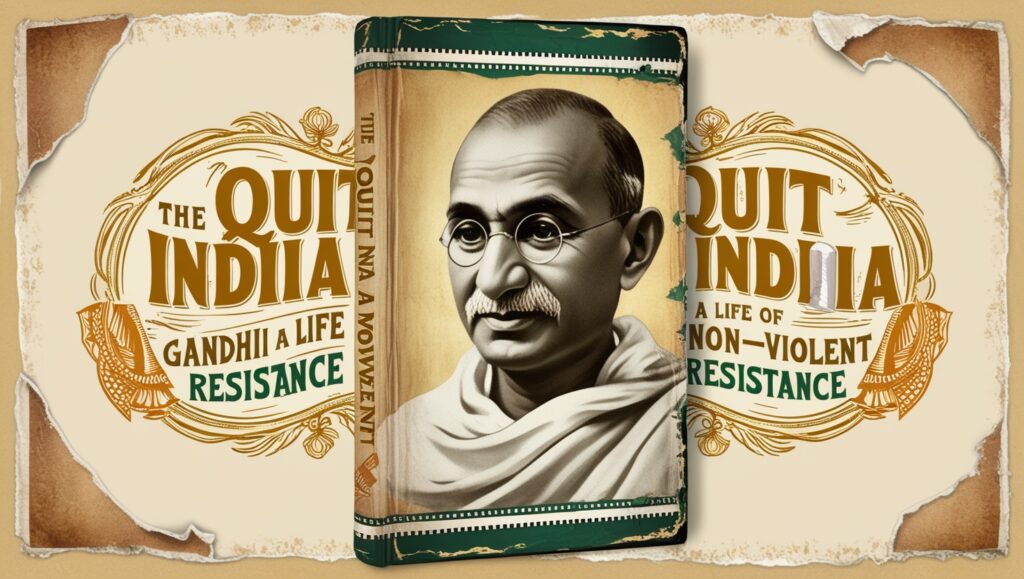
Books
Must-Read Books on India’s Independence Movement and Freedom Struggle
To gain a deep understanding of India’s journey to independence, several books are essential reading. “India: A History” by John Keay provides a comprehensive overview of India’s past, including the independence movement. “The Discovery of India” by Jawaharlal Nehru offers personal insights and reflections from one of India’s foremost leaders. “Freedom at Midnight” by Larry Collins and Dominique Lapierre vividly recounts the events leading up to India’s independence, capturing the drama and complexity of the era.
Books by Freedom Fighters
Books authored by freedom fighters themselves, such as “My Experiments with Truth” by Mahatma Gandhi, offer firsthand accounts of the struggles and philosophies that shaped the movement. “The Life of Dr. B.R. Ambedkar” by Dhananjay Keer provides an in-depth look at the life and contributions of a key figure in the fight for social justice. These books not only document the history but also bring to light the personal experiences and ideologies of those who led the struggle.
Patriotic Movies and Dramas to Watch on Independence Day
Watching patriotic movies is a powerful way to connect with India’s history and celebrate Independence Day. Films like “Lagaan,” which portrays the resilience and unity of villagers in the face of British oppression, and “Gandhi,” a biographical film on Mahatma Gandhi’s life, offer inspiring narratives. “Chakde! India” celebrates the spirit of determination and national pride through the lens of sports, while “Vande Mataram” provides a dramatized account of the struggle for independence.
Classic Indian Cinema
Classic Indian cinema also has a treasure trove of patriotic films. “Shaheed,” starring Manoj Kumar, depicts the life of revolutionary Bhagat Singh, while “Jagriti” portrays the educational reforms and nationalistic fervor of the time. These films not only entertain but also educate viewers about the sacrifices and ideals that shaped modern India.
Recent Releases and Dramas
Recent films like “Tumbbad” and “The Man Who Knew Infinity” offer fresh perspectives on India’s history and cultural heritage. For dramas, series such as “Bharat” explore themes of national pride and identity through compelling storytelling. These modern interpretations keep the spirit of Independence Day alive and relevant to contemporary audiences.
Combining Literature and Film
Combining these books and films provides a rich and multifaceted understanding of India’s independence movement. Whether you’re a history buff or a film enthusiast, these resources offer valuable insights and reflections on the struggles and triumphs that shaped the nation. Engaging with both literature and cinema on Independence Day can deepen your appreciation for the sacrifices made and the progress achieved.
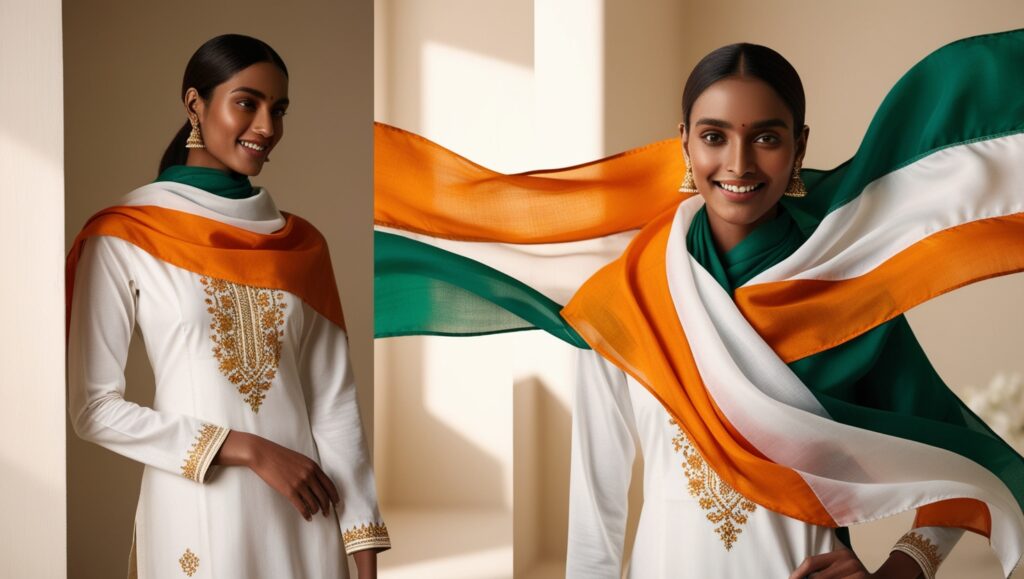
Dress Code for Independence Day: Traditional and Patriotic Attire
On Independence Day, dressing in traditional and patriotic attire is a wonderful way to show your patriotism. Many people choose to wear clothes in the colors of the national flag: saffron, white, and green. Traditional outfits like sarees, kurtas, and salwar kameez in these colors not only reflect national pride but also embrace India’s rich cultural heritage. For a more casual look, you can opt for t-shirts and accessories featuring patriotic themes or slogans.
Patriotic Accessories
Accessorizing with patriotic items can add a festive touch to your outfit. Tricolor scarves, badges, and wristbands are popular choices. These accessories are often worn during flag hoisting ceremonies and parades, helping you show your support and enthusiasm for the day’s celebrations. Wearing these items also helps in creating a unified and spirited atmosphere during Independence Day events.
Where to Buy Traditional Items for Independence Day Celebrations
For traditional attire and patriotic accessories, many options are available both online and in-store. Stores like FabIndia, Biba, and Manyavar offer a wide range of traditional clothing suitable for Independence Day. Online retailers such as Amazon and Flipkart also provide a variety of options for both clothing and accessories. For unique and customized items, local markets and boutiques often have special collections for Independence Day.
Local Markets and Boutiques
Exploring local markets can be a great way to find traditional items and support local artisans. Markets like Dilli Haat in Delhi or Colaba Causeway in Mumbai offer a range of traditional clothing and accessories. These markets often have stalls that feature handcrafted items, which can add a personal touch to your Independence Day celebrations.
Online Shopping Tips
When shopping online, look for retailers that offer a range of options for Independence Day attire. Websites such as Myntra and Ajio have dedicated sections for patriotic and traditional clothing. Ensure to check reviews and ratings to make informed choices and consider ordering in advance to avoid last-minute hassles.
Combining Tradition and Modernity
Combining traditional attire with modern elements can also be a stylish way to celebrate Independence Day. Pairing a traditional kurta with contemporary accessories or adding a patriotic touch to everyday wear can create a balanced and festive look. Embracing both traditional and modern styles helps in celebrating the day with both respect and flair.
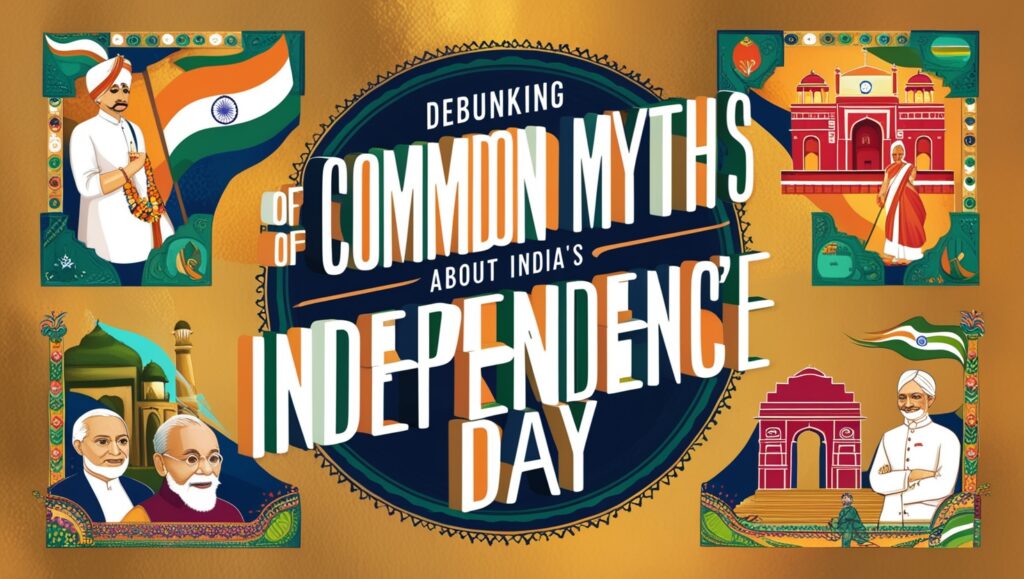
Debunking Common Myths About India’s Independence Day
Independence Day in India is often surrounded by myths and misconceptions. One common myth is that the day marks the end of all colonial influence. While India gained political independence on August 15, 1947, the social and economic impacts of colonial rule continued for years. Another misconception is that the day is solely about the political leaders. In reality, Independence Day celebrates the collective effort of countless individuals, including freedom fighters and ordinary citizens who contributed to the struggle for freedom.
Separating Fact from Fiction: Independence Day Edition
Another myth is that India’s independence was achieved solely through non-violent means. While non-violence was a core strategy, there were also significant contributions from armed resistance and revolutionary activities. The struggle for independence involved a complex mix of peaceful protests and more radical actions, each playing a crucial role in achieving freedom. Additionally, some believe that independence was a smooth transition; however, the partition of India and its aftermath involved significant challenges and hardships.
Misconception About the Role of Major Figures
There is also a misconception that only a few prominent leaders were instrumental in the independence movement. While figures like Mahatma Gandhi and Jawaharlal Nehru are well-known, many unsung heroes and regional leaders played vital roles. Leaders such as Subhas Chandra Bose, Sardar Patel, and Bhagat Singh, among others, made significant contributions that were crucial to the success of the independence movement.
Understanding the Partition and Its Impact
A common myth is that the partition of India in 1947 was a seamless process. In reality, the partition led to widespread violence, displacement, and suffering. The division of British India into India and Pakistan was accompanied by significant turmoil, which had a lasting impact on millions of people. Acknowledging this painful chapter is essential for a comprehensive understanding of India’s journey to independence.
Independence Day Celebrations
Some also believe that Independence Day celebrations are only about flag hoisting and speeches. While these are important aspects, the day also includes various cultural programs, parades, and exhibitions that highlight the nation’s achievements and diverse heritage. Celebrations across the country involve community events, performances, and educational activities that reflect the spirit of independence and national unity.
Clearing Up Misunderstandings
Addressing these misconceptions helps in gaining a more accurate understanding of India’s independence movement and its significance. Recognizing the complexities and contributions of various individuals and groups provides a fuller picture of the nation’s journey to freedom. It also helps in appreciating the diverse ways in which Independence Day is celebrated and honored across the country.
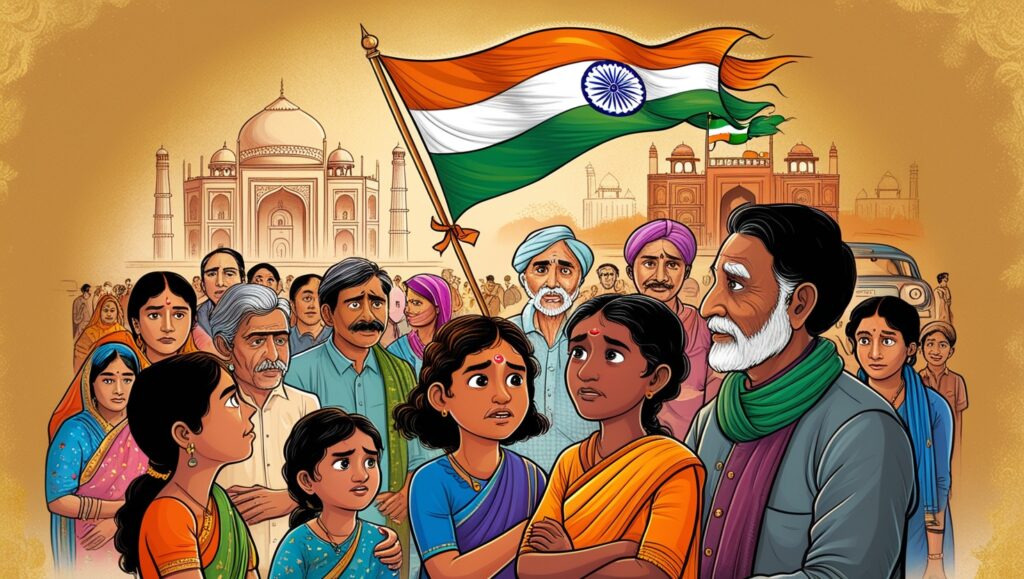
Controversies Surrounding India’s Independence Day
Controversies Surrounding India’s Independence Day Celebrations
Independence Day celebrations in India are not without their share of controversies. One significant issue is the commercialization of the holiday. Some critics argue that the focus on selling Independence Day-themed merchandise detracts from the solemnity and significance of the occasion. The influx of commercial promotions and sales can sometimes overshadow the true meaning of the day, turning it into a marketing opportunity rather than a moment of national reflection.
Regional Discontent
Another controversy revolves around regional discontent and perceptions of neglect. In some parts of India, particularly in regions with ongoing conflicts or dissatisfaction with central policies, Independence Day celebrations can highlight feelings of alienation or injustice. For instance, areas like Kashmir or the northeastern states may experience tensions that complicate the national unity often celebrated on this day.
Criticisms of Nationalism
Critics also raise concerns about the growing nationalism associated with Independence Day. While patriotism is a positive force, excessive nationalism can sometimes lead to exclusionary practices or the marginalization of dissenting voices. The pressure to conform to a singular vision of patriotism may stifle diverse viewpoints and suppress discussions on critical issues facing the country.
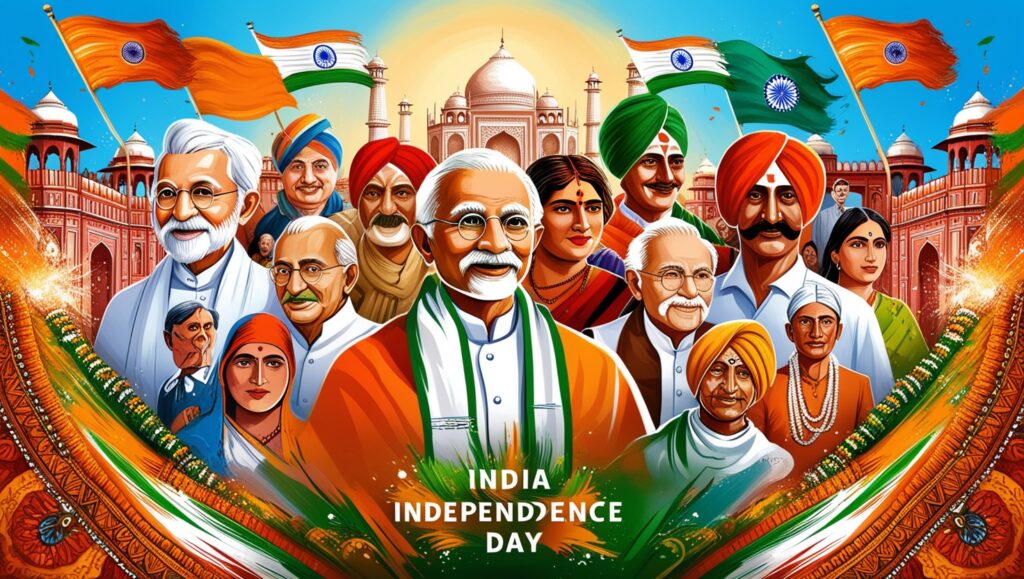
Historical Narratives and Representation
The portrayal of historical events related to Independence Day can also be a source of controversy. There are criticisms regarding the portrayal of certain historical figures and events in a manner that may oversimplify or skew the complexities of India’s freedom struggle. Debates about which narratives are emphasized or omitted can lead to differing opinions on the portrayal of history and the role of various figures in the independence movement.
Infrastructural and Administrative Issues
Administrative and infrastructural challenges also impact Independence Day celebrations. Issues such as inadequate planning for large-scale events, security concerns, and logistical problems can affect the smooth conduct of celebrations. These issues can sometimes lead to public dissatisfaction and highlight the need for better management and coordination.
Understanding the Concerns
Understanding these controversies and criticisms is important for a balanced view of Independence Day. Addressing these concerns openly can lead to more inclusive and meaningful celebrations. By acknowledging and addressing these issues, the significance of Independence Day can be preserved while ensuring that the celebrations remain relevant and respectful to all sections of society.

The Environmental Impact of Independence Day Celebrations
Independence Day celebrations often have notable environmental impacts, particularly due to the use of fireworks and large-scale events. Fireworks, while visually spectacular, contribute to air and noise pollution. The smoke from fireworks can degrade air quality, affecting both people and wildlife. Additionally, the disposal of fireworks debris and other waste from celebrations can contribute to litter and pollution, impacting local ecosystems.
Waste Generation
The waste generated from Independence Day celebrations, including plastic flags, disposable cutlery, and food wrappers, poses a significant environmental challenge. Many of these items are used once and discarded, adding to the growing problem of landfill waste. In urban areas, the accumulation of such waste can lead to increased litter and pollution, affecting city cleanliness and environmental health.
Eco-Friendly Ways to Celebrate Independence Day
To mitigate the environmental impact, adopting eco-friendly celebration practices is essential. Opting for sustainable materials for decorations, such as fabric flags instead of plastic, can reduce waste. Encouraging the use of biodegradable or reusable items for parties and gatherings helps in minimizing single-use plastics and reduces overall waste generation.
Firework Alternatives
Consider celebrating with firework alternatives that are environmentally friendly. Light shows using LED technology or drone displays offer stunning visual effects without the harmful emissions associated with traditional fireworks. These alternatives not only reduce air pollution but also offer innovative and engaging ways to enjoy the festivities.
Community Clean-Up Initiatives
Participating in or organizing community clean-up events can help manage and mitigate the waste generated during Independence Day celebrations. Engaging in local clean-up drives after events helps in reducing litter and encourages responsible disposal of waste. These initiatives also foster community spirit and promote environmental awareness.
Promoting Environmental Awareness
Raising awareness about the environmental impact of Independence Day celebrations can encourage more people to adopt sustainable practices. Educational campaigns and initiatives that highlight the importance of eco-friendly choices help in fostering a culture of environmental responsibility. By making small changes and encouraging others to do the same, the overall impact of Independence Day celebrations on the environment can be significantly reduced.
Making Independence Day Celebrations More Inclusive
Independence Day celebrations can be made more inclusive by recognizing and embracing the diversity of India’s population. This involves ensuring that all communities, regardless of their background, feel represented and respected. Incorporating elements from various cultures, languages, and traditions into the celebrations helps in fostering a sense of unity and inclusivity.
Engaging Different Communities
Engaging different communities in the planning and execution of Independence Day events can also enhance inclusivity. Involving representatives from various ethnic, religious, and regional groups ensures that the celebrations reflect the true multicultural nature of India. This can include featuring performances, foods, and traditions from diverse groups, making the event more representative of the nation’s diversity.
Accessibility for All
Ensuring that Independence Day events are accessible to everyone is another crucial aspect of inclusivity. This includes providing facilities for people with disabilities, offering information in multiple languages, and making sure that events are held in locations that are easy to reach for people from different socio-economic backgrounds. Accessibility helps in ensuring that all citizens have the opportunity to participate in and enjoy the celebrations.
Celebrating Diversity on Independence Day
Celebrating diversity on Independence Day involves highlighting and honoring the various cultural, linguistic, and regional identities that make up the nation. Events and programs that showcase different traditions, folk dances, music, and cuisines can promote a deeper appreciation of India’s rich cultural tapestry. This approach not only celebrates the spirit of independence but also emphasizes the importance of unity in diversity.
Educational Initiatives
Educational initiatives that focus on India’s diverse heritage can also play a role in fostering inclusivity. Organizing workshops, lectures, and exhibitions that explore the history, art, and traditions of various communities helps in broadening understanding and appreciation. Such initiatives can be integrated into Independence Day celebrations to enhance awareness and promote a more inclusive perspective.
Promoting Unity and Respect
Promoting unity and respect among different communities is essential for truly inclusive celebrations. Encouraging dialogue and collaboration among various groups helps in building mutual respect and understanding. By highlighting stories of collaboration and harmony, Independence Day can serve as a reminder of the strength found in diversity and the importance of working together as a unified nation.
How Technology is Changing Independence Day Celebrations
Technology has significantly transformed Independence Day celebrations, offering new and engaging ways to mark the occasion. Virtual reality (VR) and augmented reality (AR) are now being used to create immersive experiences of historical events, allowing people to experience significant moments from India’s past in a new and interactive way. These technologies provide an educational and entertaining dimension to the celebrations.
Digital Displays and Light Shows
Digital displays and LED light shows have become popular alternatives to traditional fireworks. These modern visual effects can create stunning, synchronized displays without the environmental impact of fireworks. Cities are increasingly using these technologies to put on vibrant shows that captivate audiences while being eco-friendly and cost-effective.
Social Media and Virtual Celebrations
Social media platforms have become essential tools for celebrating Independence Day. Live streams, virtual events, and online campaigns allow people to participate in celebrations from anywhere in the world. Social media also facilitates sharing stories, messages, and pictures, helping to spread patriotic spirit and engage a broader audience.
Innovative Ways to Celebrate Independence Day
One innovative way to celebrate Independence Day is through interactive online quizzes and games that test knowledge about India’s history and culture. These activities can be educational and entertaining, making the learning process fun and engaging for all ages. Additionally, virtual reality experiences that recreate historical events or famous speeches offer a unique way to connect with the past.
Crowdsourced and Community-Driven Events
Crowdsourced and community-driven events are another way technology is enhancing Independence Day celebrations. Platforms that allow people to contribute ideas, share content, or collaborate on projects help in organizing inclusive and diverse events. This approach not only brings people together but also ensures that the celebrations reflect a wide range of perspectives and talents.
Innovative Commemorative Projects
Technological innovation also enables the creation of commemorative projects such as digital archives or interactive timelines that highlight important milestones in India’s history. These projects can be accessed by people of all ages and serve as valuable resources for learning and reflection. By integrating technology into the celebrations, Independence Day can be both a time for tradition and a celebration of modern advancements.
How Other Countries Celebrate Their Independence Days
Independence Day celebrations vary widely around the world, reflecting each nation’s unique history and culture. In the United States, Independence Day on July 4th is marked by fireworks, parades, and patriotic concerts. Similarly, France celebrates Bastille Day on July 14th with grand fireworks, military parades, and public festivities that commemorate the French Revolution. These celebrations highlight each country’s history and pride through vibrant public events and cultural activities.
Celebrations in the UK and Canada
In the United Kingdom, the Queen’s official birthday and other national holidays are celebrated with ceremonies, parades, and public gatherings. The UK’s emphasis is often on historical traditions and royal events. Canada’s Canada Day on July 1st includes fireworks, concerts, and family-friendly activities, celebrating Canadian heritage and unity. Both countries use their national days to honor their past and promote national pride.
Global Inspirations for India’s Independence Day Celebrations
India can draw inspiration from these global celebrations to enhance its own Independence Day festivities. For example, incorporating elements such as community parades or public concerts could further engage people across the nation. Additionally, hosting international cultural exchanges or collaborative events with other countries could provide a broader perspective and enrich India’s Independence Day celebrations.
Creative Ideas from Around the World
Countries like Japan and South Korea use their national days to showcase cultural performances and traditional music. India could consider incorporating similar elements, such as traditional dance performances or musical tributes, to celebrate its diverse cultural heritage. Highlighting regional traditions and arts can add a unique touch to the celebrations and promote national unity.
Embracing Technological Innovations
Looking at how other countries use technology to enhance their celebrations, India might explore innovative ways to integrate digital media and interactive platforms into Independence Day events. For example, creating virtual reality experiences that depict key moments in India’s history or using augmented reality for interactive educational activities could offer fresh and engaging ways to celebrate.
Fostering Global Connections
Finally, fostering global connections through Independence Day celebrations can enhance international understanding and camaraderie. Hosting virtual events that connect with celebrations in other countries or participating in global commemorative projects can broaden the scope of India’s Independence Day observances. By embracing these global inspirations, India can celebrate its independence while also participating in a shared global heritage.
Interesting Facts and Trivia About India’s Independence Day
India’s Independence Day, celebrated on August 15th, marks the end of British rule in 1947. One fascinating fact is that Jawaharlal Nehru, India’s first Prime Minister, hoisted the national flag for the first time at the Red Fort in Delhi. Additionally, August 15th was chosen because it was the anniversary of the Allied victory over Japan in World War II, which had significant symbolism for the Indian independence movement.
Historical Highlights
Another interesting tidbit is that India’s national anthem, “Jana Gana Mana,” was first sung at the Calcutta Session of the Indian National Congress in 1911. The anthem’s adoption as the national song in 1950 was a significant milestone in India’s journey post-independence. The day is also marked by the tradition of the Prime Minister’s speech from the Red Fort, a practice that started with Nehru’s address in 1947.
Unique Celebrations
Did you know that Independence Day is celebrated with unique traditions across different parts of India? For instance, in the northeastern states, people often participate in traditional dances and cultural performances. In states like Gujarat, the day is celebrated with vibrant processions and community events that reflect the local culture and spirit.
Symbolic Events
An intriguing fact about the celebrations is that India’s Independence Day is a public holiday in many countries where the Indian diaspora resides. This global observance highlights the widespread impact and significance of India’s independence. Indian embassies and consulates around the world often host special events, including flag hoisting ceremonies and cultural performances.
Quiz: Test Your Knowledge of Independence Day
To test your knowledge of India Independence Day, consider these fun quiz questions: What year did India gain independence from British rule? Who was the first Prime Minister to address the nation on Independence Day? What was the original name of the Indian national anthem before it was officially adopted? Try answering these questions to see how much you know about this pivotal moment in Indian history!
Engaging with History
Quizzes and trivia are not only entertaining but also educational, offering a chance to learn more about India’s rich history and the significance of Independence Day. Engaging with such facts can deepen your appreciation for the struggles and triumphs that shaped the nation, making Independence Day a more meaningful and informed celebration.
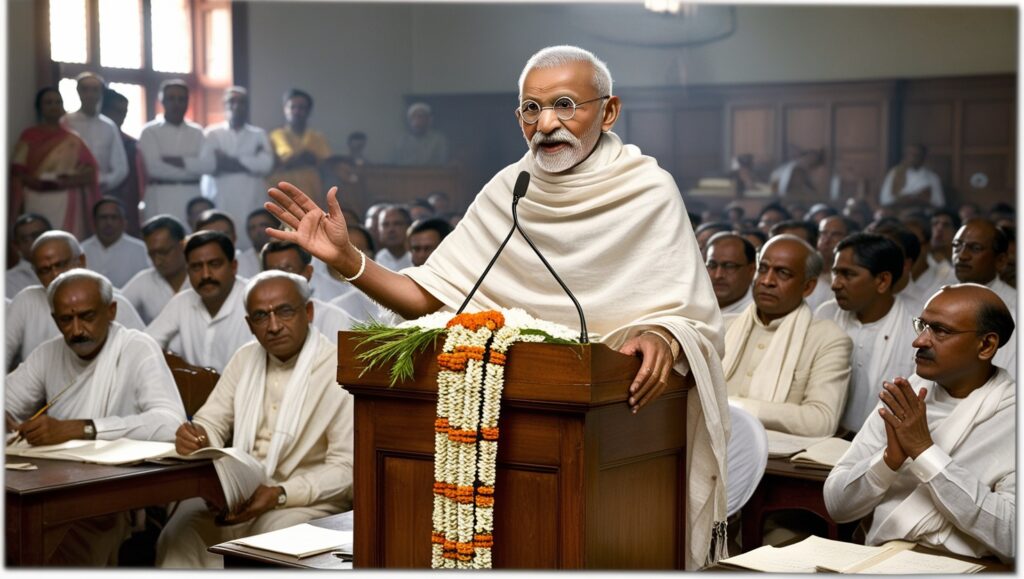
Personal Stories of Independence Day Celebrations
Independence Day is a time for personal reflection and celebration, and many people have unique stories about how they observe this important day. For instance, some families have a tradition of coming together for a special meal and sharing stories about their ancestors who fought for freedom. These gatherings not only celebrate independence but also strengthen family bonds and pass on the spirit of patriotism to younger generations.
Memorable Ceremonies
One memorable story comes from a student who participated in a flag hoisting ceremony at their school in 15th of August in the India Independence Day. For them, it was a deeply moving experience to stand alongside classmates and sing the national anthem, feeling a strong sense of unity and pride. Such ceremonies are often filled with emotional moments and a shared sense of accomplishment that make Independence Day special for many.
How Independence Day is Celebrated in Different Parts of India
In different parts of India, India Independence Day is celebrated with a variety of local traditions and customs. In Punjab, for example, the day often includes vibrant parades and cultural performances showcasing traditional dance forms like Bhangra. These celebrations highlight the regional culture and add a colorful touch to the national festivities.
Festivals in the South
In the southern states, Independence Day might include traditional music and dance performances that reflect the rich cultural heritage of the region. For instance, in Kerala, people celebrate with traditional Onam dances and songs, integrating local festivals with the national holiday to create a unique and festive atmosphere.
Celebrations in Urban Areas
In urban areas like Mumbai and Delhi, Independence Day often features large-scale events, including parades, concerts, and public speeches. These cities may host grand flag hoisting ceremonies attended by dignitaries and the general public, offering a more formal and organized approach to celebrating the day.
Local and Community Celebrations
Smaller towns and villages might celebrate India Independence Day with community gatherings, where local traditions and customs play a significant role. These events often include local folk performances, community feasts, and simple flag hoisting ceremonies, reflecting the close-knit nature of rural life and the deep connection to the country’s history and values.
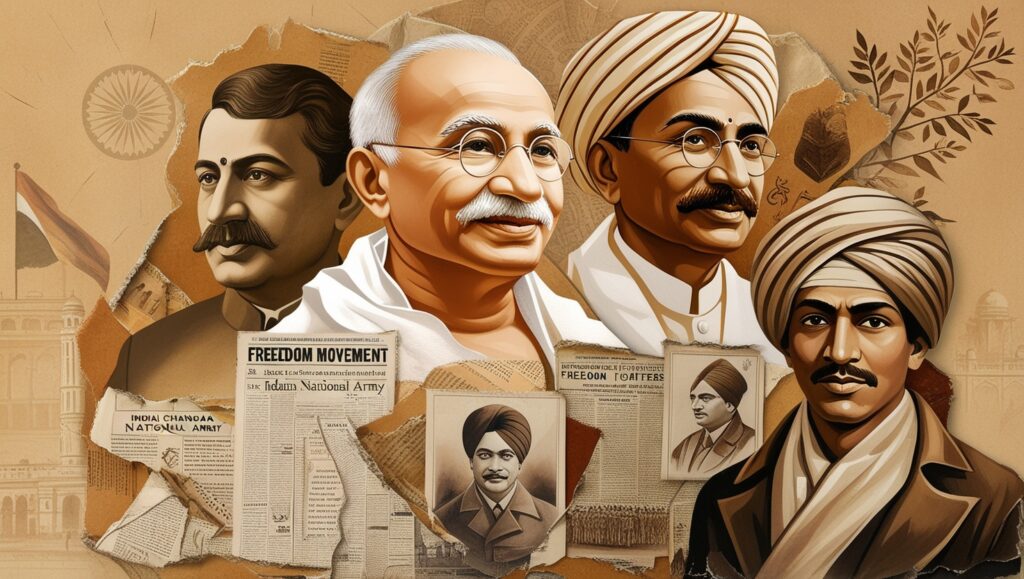
Unsung Heroes of India’s Independence Movement
In the India Independence Day figures like Mahatma Gandhi and Jawaharlal Nehru are widely celebrated, many unsung heroes played crucial roles in India’s independence movement. For example, Subhas Chandra Bose, despite being less recognized in mainstream narratives, made significant contributions with his leadership of the Indian National Army. His efforts to seek international support for India’s freedom were pivotal in the struggle against British rule.
Contributions of Bhagat Singh
Another important yet often overshadowed figure is Bhagat Singh. Known for his revolutionary activities, Bhagat Singh’s courage and commitment to the cause of independence inspired countless others. His act of defiance and sacrifice in the face of colonial oppression made him a symbol of youthful rebellion and patriotism, leaving a lasting impact on the independence movement.
Role of Women in the Freedom Struggle
In the India Independence Day Movement women also played a vital role in the independence movement, though their contributions are sometimes overlooked. Leaders like Rani Lakshmi Bai of Jhansi and Kasturba Gandhi, the wife of Mahatma Gandhi, were instrumental in mobilizing support and leading resistance against British rule. Their bravery and resilience were crucial in sustaining the momentum of the freedom struggle.
Contributions of Sardar Patel
Sardar Vallabhbhai Patel, known as the “Iron Man of India,” was instrumental in integrating princely states into the newly independent India. His diplomatic skills and firm leadership were crucial in unifying the country and laying the foundation for a stable and cohesive nation. Patel’s contributions were vital in shaping the political landscape of post-independence India.
The Legacy of Dr. B.R. Ambedkar
Dr. B.R. Ambedkar’s contributions to India’s independence movement and the drafting of the Indian Constitution are significant. His efforts to secure social justice and equality for marginalized communities were groundbreaking. Ambedkar’s work in establishing a framework for a democratic and inclusive India has had a profound and lasting impact on the country’s development.
Impact of Lesser-Known Leaders
There were also many lesser-known leaders and activists who made significant contributions to the Indian Independence Day movement. Figures like Chandra Sekhar Azad and Lala Lajpat Rai played crucial roles in various revolutionary activities and movements. Their sacrifices and contributions are essential chapters in the story of India’s path to freedom, highlighting the diverse efforts that contributed to achieving independence.
Read More – “Friendship day“
“Independence day”
“Bolbam“
“National Mountain Climbing Day”
“Quit India Movement“
When is India Independence Day?
In 15th of August.
When did India got Independence?
In the year 1947.


